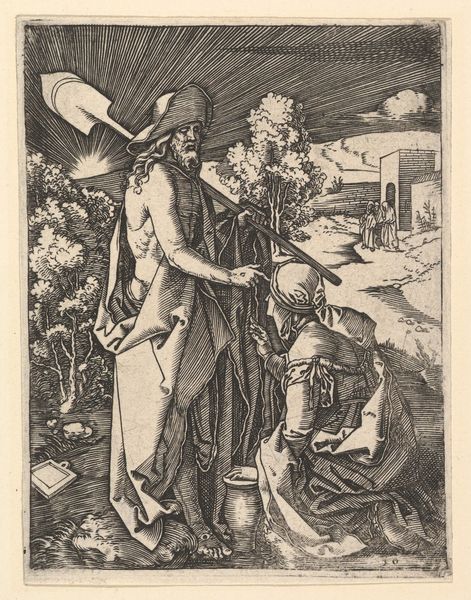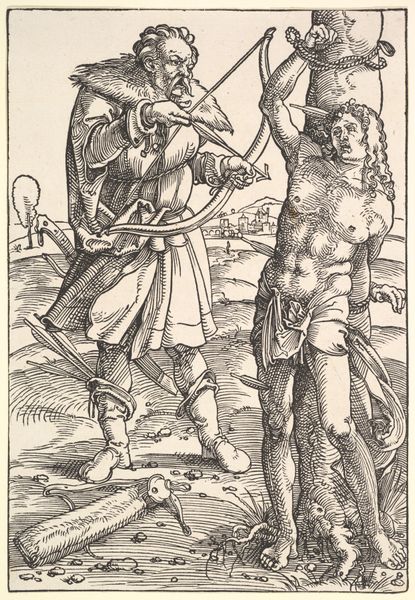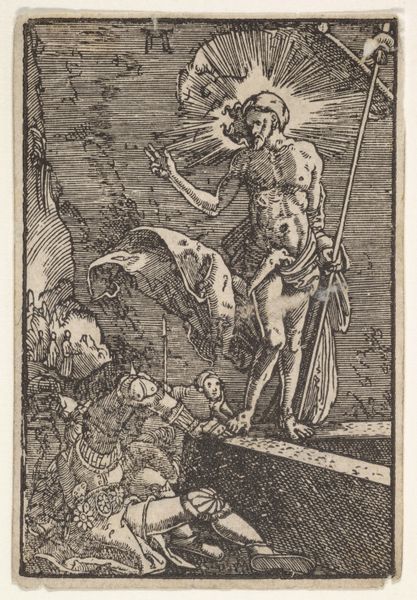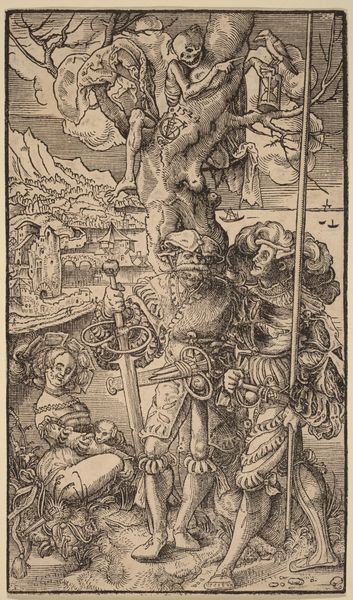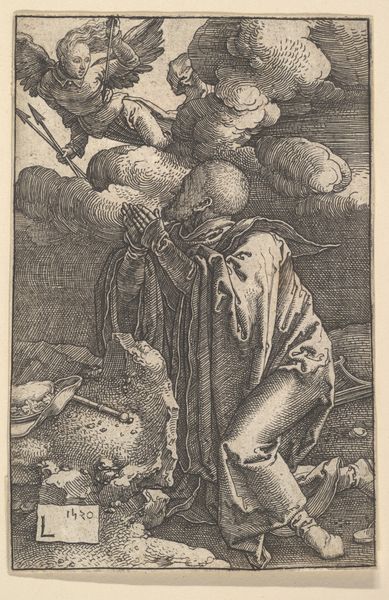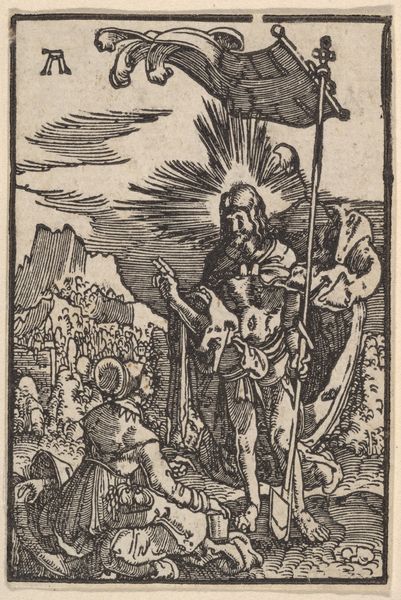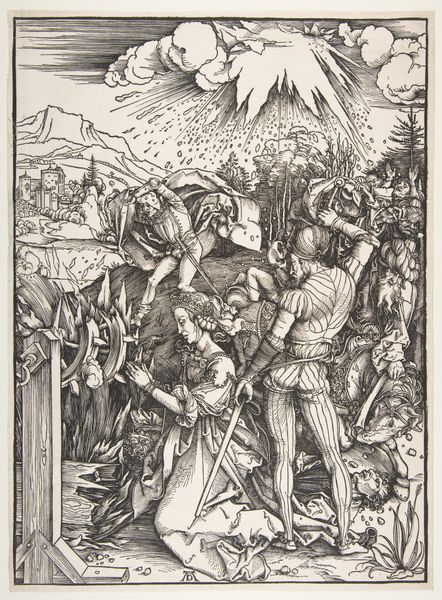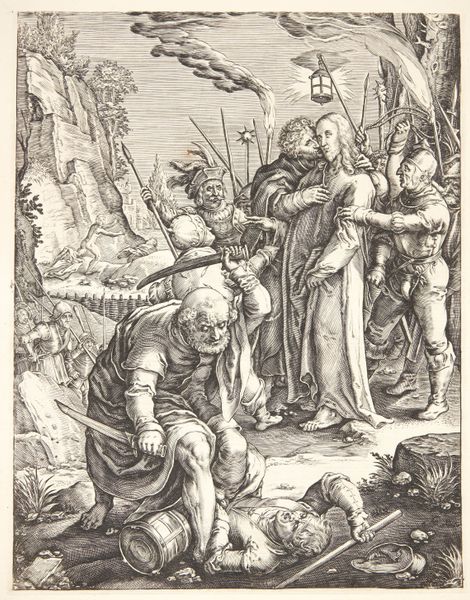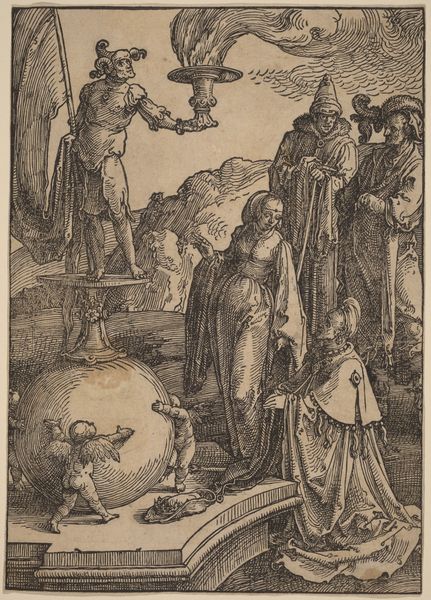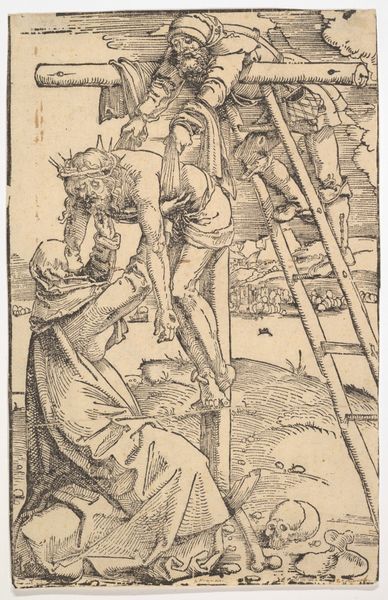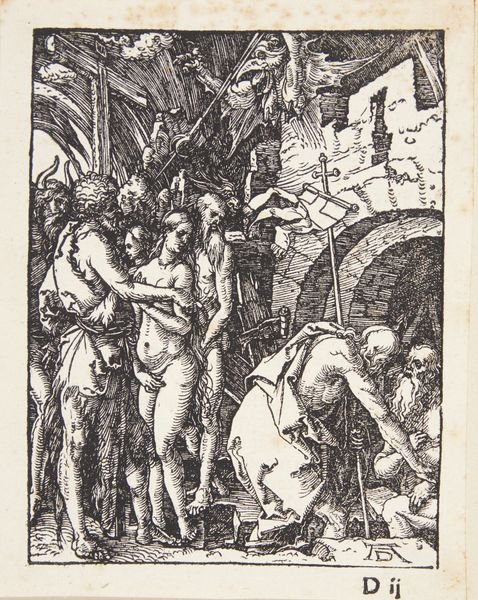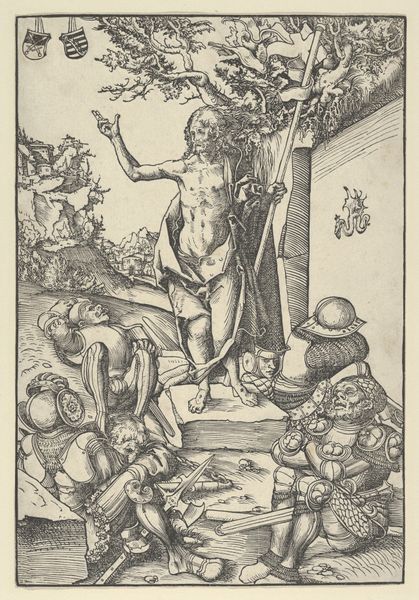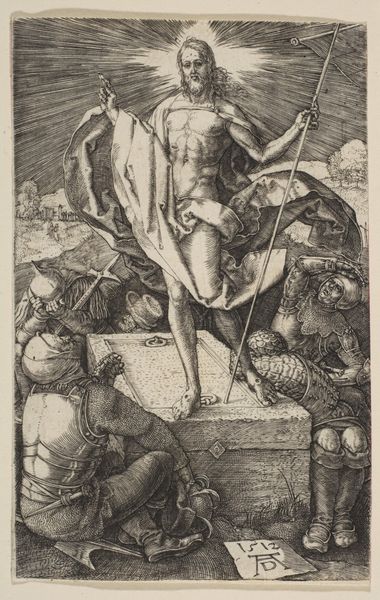
print, woodcut
#
narrative-art
# print
#
figuration
#
woodcut
#
history-painting
#
northern-renaissance
Dimensions: 143 mm (height) x 113 mm (width) (bladmaal)
Curator: This is Albrecht Dürer's "Noli me tangere," created between 1508 and 1511. It's a woodcut, currently held here at the Statens Museum for Kunst. The detail Dürer achieves with this medium is quite something. Editor: My first impression is stark contrast. The way Dürer manipulates black and white creates a powerful scene, full of emotional tension, the grief is almost palpable in Mary Magdalene. Curator: Exactly! "Noli me tangere" translates to "Do not touch me." It captures the biblical moment after Christ's resurrection when Mary Magdalene recognizes him. The social context is significant: the image engages with questions of faith and challenges perceptions of religious authority within the northern Renaissance. Editor: It’s interesting to note that he depicts Jesus as a gardener with his tool at his shoulder. There's a powerful statement about class and labor at play here. I wonder if it's a reflection on the labor of faith and the gardener acting as the protector of growth. Curator: Well, it also goes back to interpretations within the New Testament, portraying Mary perhaps not initially recognising Jesus and thinking he was the gardener. It raises theological and social questions of visibility, power and belief. This ties into Dürer's engagement with humanist thought that shaped art and discourse back then. Editor: But consider the dynamic of gender and power, though! A male figure denying physical contact with a female one carries deep weight. I think that Durer is pointing to a narrative far beyond just belief. Is it also about controlling female agency, enforcing patriarchal religious and social structures? Curator: It could well be read in this manner; these themes become recurrent at this point. But this interpretation perhaps projects 21st-century perspectives onto early 16th-century art? It can be beneficial but there is an immense chasm between the eras. Editor: Absolutely, but grappling with this complexity IS the point. This intersectional reading invites a wider contemporary discussion of image creation in early Northern Renaissance! Understanding this enriches our view and makes historical objects and museums more relevant. Curator: A fascinating lens to explore and certainly very rewarding. It enriches my interpretation, which leans to thinking about print dissemination and the democratization of biblical scenes during the period. Editor: It certainly creates the opportunity to link Dürer’s image and the conversations around it to present day problems.
Comments
No comments
Be the first to comment and join the conversation on the ultimate creative platform.
